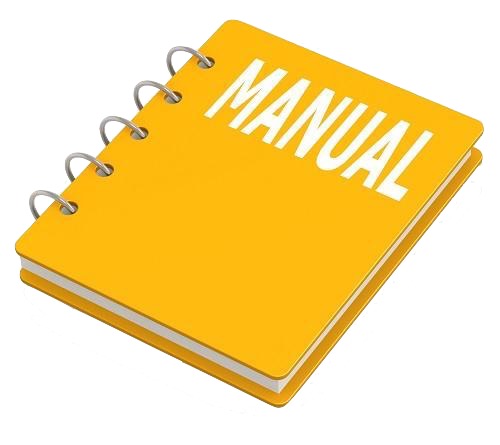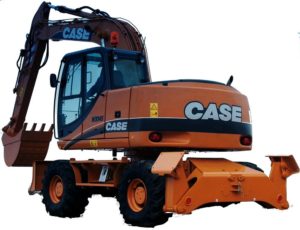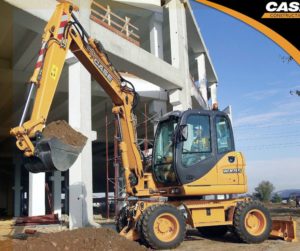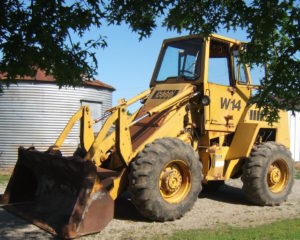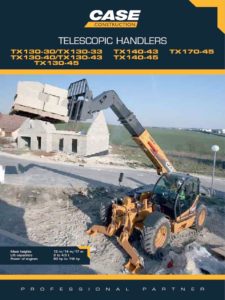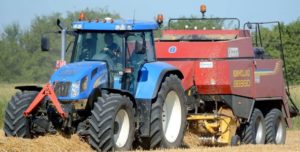INSTANT DOWNLOAD (add to cart)
4,818 pages, bookmarked, Searchable, Printable, high quality PDF
9-91211_FR – Case WX145, WX165, WX185 PELLE HYDRAULIQUE Manuel de réparations.pdf
9-91221_EN – Case WX145, WX165, WX185 HYDRAULIC EXCAVATOR Service manual.pdf
9-91231_DE – Case WX145, WX165, WX185 HYDRAULIKBAGGER Reparatur Handbuch.pdf
9-91241_ES – Case WX145, WX165, WX185 ESCAVADORA HIDRAULICA Manual de reparación.pdf
9-91251_IT – Case WX145, WX165, WX185 ESCAVATORE IDRAULICO Manuale per le riparazioni.pdf
84285662 – Case WX145, WX165, WX185 Wheel Excavators Stage IIIA Operator’s Manual.pdf
87677462A – Case WX145, WX165, WX185 Wheel Excavators Repair Manual.pdf
Complete workshop & service manual with electrical wiring diagrams for Case WX145, WX165, WX185 Wheel Excavators. It’s the same service manual used by dealers that guaranteed to be fully functional and intact without any missing page.
This Case WX145, WX165, WX185 Wheel Excavators service & repair manual (including maintenance, overhaul, disassembling & assembling, adjustment, tune-up, operation, inspecting, diagnostic & troubleshooting…) is divided into different sections. Each section covers a specific component or system with detailed illustrations. A table of contents is placed at the beginning of each section. Pages are easily found by category, and each page is expandable for great detail. The printer-ready PDF documents work like a charm on all kinds of devices.
EXCERPT:
INDEX
SECTION 01 – SAFETY PRECAUTIONS
1. GENERAL SAFETY INSTRUCTIONS….. 2
2. USE INSTRUCTION….. 11
SECTION 02 – CONTROLS AND INSTRUMENTS
1. SWITCHES AND PUSH-BUTTONS….. 1
2. CONTROLS AND PEDALS … 7
3. MULTI-FUNCTION DISPLAY …. 10
SECTION 03 – TECHNICAL SPECIFICATIONS
1. MAIN COMPONENTS…. 1
2. DIMENSIONS – OPERATING WEIGHTS… 3
3. DIGGING PERFORMANCE … 11
4. LIFTING CAPACITIES….. 25
4.1 WX 165 MODELS…. 34
4.2 WX 185 MODELS…. 46
5. HYDRAULIC SYSTEM ….. 54
6. ROTATION …. 56
7. TRAVEL… 57
8. TYRES….. 58
9. BRAKES ….. 58
10. STEERING …. 58
11. ELECTRICAL SYSTEM… 58
12. BUCKETS… 59
13. TIGHTENING TORQUES… 60
14. CENTRALIZED LUBRICATION PUMP (OPTIONAL)…. 60
15. FUEL SYSTEM…. 60
16. ENGINE… 61
17. SUPPLY SUMMARIZING CHART… 62
SECTION 04 – UPPER STRUCTURE
1. MAIN COMPONENTS…. 1
2. SLEWING BEARING … 2
3. ROTATION GEARMOTOR… 7
3.1 DISASSEMBLY AND ASSEMBLY … 12
3.2 SPECIAL TOOLS ….. 34
4. MULTI-COOLER….. 35
4.1 TECHNICAL SPECIFICATIONS … 36
5. HYDRAULIC PUMPS …. 39
6. MUFFLER… 40
7. HYDRAULIC OIL TANK… 41
8. AIR FILTER … 47
9. COUNTERWEIGHT… 47
10. FUEL SYSTEM …. 48
11. CAB AND OPERATOR’S SEAT … 55
12. CENTRALIZED LUBRICATION PUMP….. 66
SECTION 05 – UNDERCARRIAGE
1. UNDERCARRIAGE COMPONENTS…. 1
2. REAR RIGID AXLE… 2
2.1 TECHNICAL SPECIFICATIONS… 3
2.2 DISASSEMBLY AND ASSEMBLY… 6
2.3 DISASSEMBLY AND ASSEMBLY… 8
2.4 TROUBLESHOOTING… 87
2.5 SPECIAL TOOLS….. 89
3. TRAVEL MOTOR…. 90
3.1 TECHNICAL SPECIFICATIONS…. 90
3.2 DISASSEMBLY AND ASSEMBLY…. 91
3.3 DISASSEMBLY AND ASSEMBLY…. 92
4. CARDAN SHAFT ….. 103
4.1 DISASSEMBLY AND ASSEMBLY….. 104
5. FRONT STEERING AXLE …. 106
5.1 TECHNICAL SPECIFICATIONS….. 107
5.2 DISASSEMBLY AND ASSEMBLY….. 110
5.3 DISASSEMBLY AND ASSEMBLY….. 112
5.4 TROUBLESHOOTING…. 185
5.5 SPECIAL TOOLS… 187
6. WHEELS AND TYRES … 188
7. BLADE … 192
7.1 BLADE CYLINDER… 194
8. AXLE FLOATING LOCKING CYLINDERS … 202
8.1 TECHNICAL SPECIFICATIONS….. 203
8.2 DISASSEMBLY AND ASSEMBLY….. 204
8.3 AIR BLEEDING… 205
8.4 DISASSEMBLY AND ASSEMBLY….. 206
8.5 TROUBLESHOOTING…. 208
9. STABILIZERS …. 209
9.1 STABILIZER CYLINDERS….. 212
9.2 TROUBLESHOOTING…. 221
10. LEFT LADDER… 223
11. RIGHT LADDER AND TOOL STORAGE BOX… 224
12. ROTARY CONTROL VALVE AND ELECTRIC ROTOR…. 225
12.1 TECHNICAL SPECIFICATIONS….. 225
12.2 DISASSEMBLY AND ASSEMBLY….. 226
12.3 DISASSEMBLY AND ASSEMBLY….. 227
12.4 ELECTRIC ROTOR … 229
SECTION 06 – FRONT ATTACHMENT
1. TYPES OF FRONT ATTACHMENT….. 2
2. HYDRAULIC CYLINDERS…. 4
2.1 BOOM CYLINDER….. 5
2.2 SPECIAL TOOLS ….. 50
3. BUCKETS… 51
4. QUICK COUPLER ….. 55
5. CLAMSHELL BUCKET…. 59
SECTION 07 – STEERING SYSTEM
1. OPERATION…. 1
2. POWER STEERING…. 3
2.1 DISASSEMBLY AND ASSEMBLY ….. 5
3. PRIORITY VALVE ….. 23
4. TROUBLESHOOTING….. 24
SECTION 08 – BRAKE SYSTEM
1. OPERATION…. 1
2. SERVICE BRAKE….. 4
3. PARKING BRAKE …. 7
4. PEDAL BRAKE VALVE … 8
5. ACCUMULATORS…. 9
6. TROUBLESHOOTING….. 11
SECTION 09 – HYDRAULIC SYSTEM
1. HYDRAULIC SYSTEM …. 1
2. HYDRAULIC SYSTEM DIAGRAMS….. 5
2.1 HYDRAULIC SYSTEM DIAGRAMS – UPPER STRUCTURE … 5
2.2 HYDRAULIC SYSTEM DIAGRAMS – UNDERCARRIAGE ….. 31
2.3 HYDRAULIC SYSTEM DIAGRAMS BLADE AND/OR STABILIZERS … 35
3. HYDRAULIC PUMPS …. 39
4. UPPER STRUCTURE CONTROL VALVE ….. 56
5. UNDERCARRIAGE CONTROL VALVE … 66
6. PILOT CONTROL ASSY ….. 68
7. ROTATION SYSTEM …. 77
8. TRAVEL… 81
9. STABILIZATION HYDRAULIC SYSTEM….. 92
10. BOOM HYDRAULIC SYSTEM ….. 98
11. HYDRAULIC SYSTEM … 105
12. HYDRAULIC SYSTEM OF DIPPER…. 111
13. HYDRAULIC SYSTEM OF PLACING BOOM….. 115
14. HYDRAULIC SYSTEM WITH COMBINATION OF DIFFERENT FUNCTIONS
(BOOM, PLACING BOOM, DIPPER AND BUCKET) ….. 122
15. HYDRAULIC SYSTEM OF HAMMER (WITH PLACING BOOM) ….. 124
16. HYDRAULIC SYSTEM OF HAMMER AND SHEARS (WITH PLACING BOOM)….. 127
17. HYDRAULIC SYSTEM OF SHEARS (WITH PLACING BOOM) … 132
18. HYDRAULIC SYSTEM OF HAMMER (WITH MONOBOOM)….. 135
19. HYDRAULIC SYSTEM OF HAMMER AND SHEARS (WITH MONOBOOM) …. 138
20. HYDRAULIC SYSTEM OF SHEARS (WITH MONOBOOM)… 143
21. TROUBLESHOOTING… 146
SECTION 10 – ELECTRICAL SYSTEM
1. ELECTRICAL DIAGRAMS…. 1
2. FUSES ….. 43
3. BATTERIES… 46
4. BULBS ….. 50
5. TROUBLESHOOTING….. 55
SECTION 11 – ELECTRONICS
1. MAIN COMPONENTS …. 1
1.1 ELECTRICAL POWER SUPPLY DIAGRAM….. 3
2. COMPONENTS OF LINE 1 … 5
3. COMPONENTS OF LINE 2 … 9
3.1 TRAVEL PEDAL …. 15
3.2 ATTACHMENT PEDAL (PLACING BOOM AND HAMMER)… 16
3.3 ELECTRO-HYDRAULIC SYSTEM … 17
3.4 POWER CONTROL SYSTEM…. 18
4. ENGINE SPEED ACTUATOR … 25
5. COOLANT TEMPERATURE DETECTION….. 26
6. CHARGE AIR TEMPERATURE DETECTION… 27
7. HYDRAULIC OIL TEMPERATURE DETECTION…. 28
8. PROPORTIONAL VALVE – FAN MOTOR… 29
9. PROPORTIONAL VALVES – CONTROL BLOCK…. 30
SECTION 12 – CALIBRATION
1. NECESSARY OPERATIONS BEFORE CALIBRATION….. 1
2. DISPLAY: CALIBRATION MENU … 3
3. CALIBRATIONS WITH THE ENGINE RUNNING… 4
3.1 VDO CALIBRATION … 6
3.2 POWER CALIBRATION … 8
3.3 MAIN VALVE CALIBRATION (CONTROL VALVE)….. 10
3.4 TRAVEL CALIBRATION…. 13
3.5 PUMP DELIVERY CALIBRATION…. 15
3.6 ROTATION PUMP CALIBRATION… 18
3.7 AUXILIARY PRESSURE CALIBRATION ….. 20
4. CALIBRATIONS WITH THE ENGINE STOPPED … 22
4.1 CALIBRATIONS, ALL SOLENOID VALVES, MAIN PUMP, ROTATION PUMP,
AUXILIARY PRESSURE … 24
4.2 MAIN VALVE CALIBRATION (CONTROL VALVE)….. 26
…
SECTION 05 – UNDERCARRIAGE
Disassembly
Before draining the oil, place the wheel hub with the plug (1) in the highest position and unscrew it of a few turns in order to relieve a possible internal pressure, then completely remove it. Rotate the hub until the hole reaches the lowest position.
Drain the oil completely.
Remove the screws (2) from the planet carrier cover.
By means of levers inserted in the provided slots, remove the planet carrier cover (3).
Remove the planet carrier cover (3) and the O-ring (6).
…
